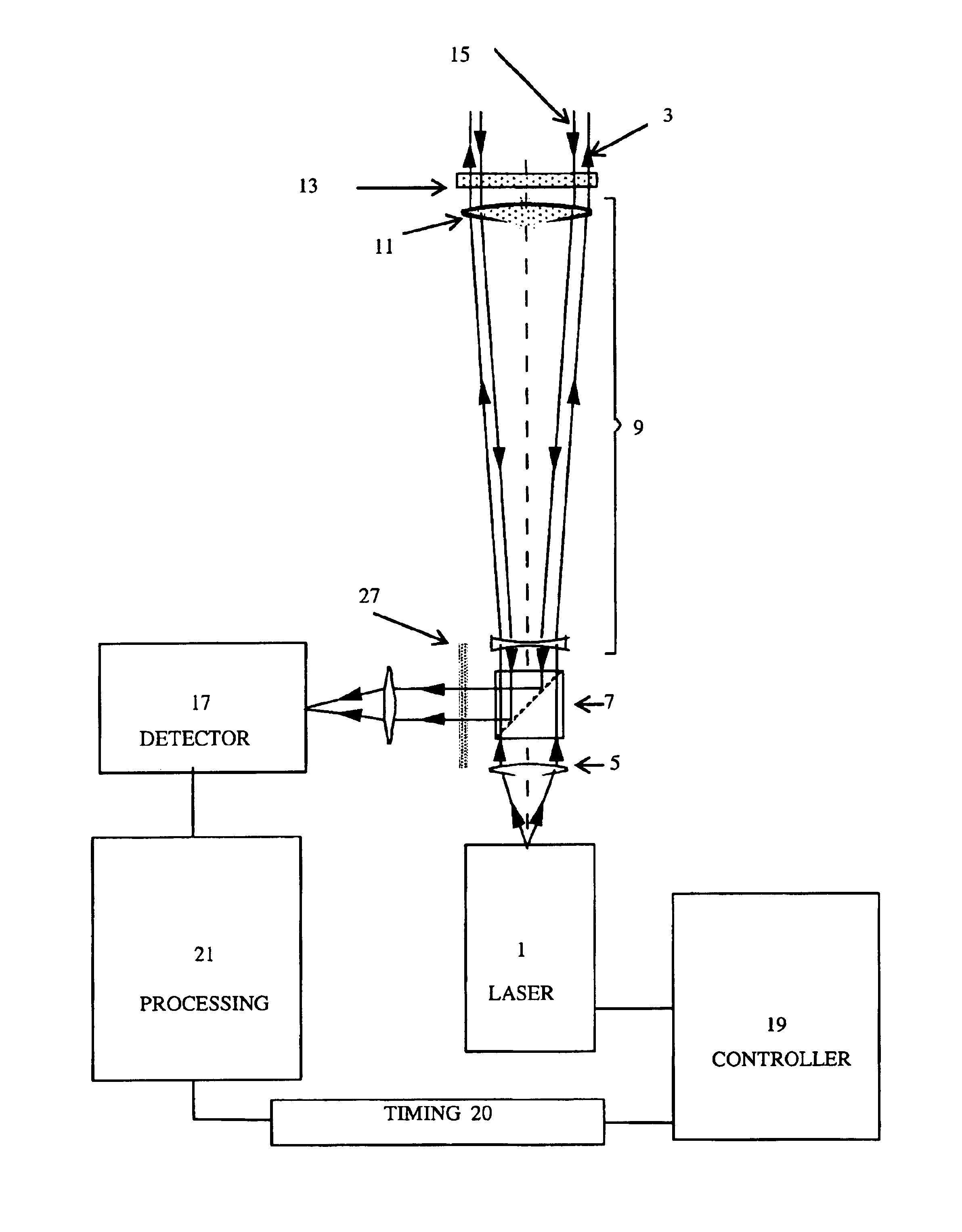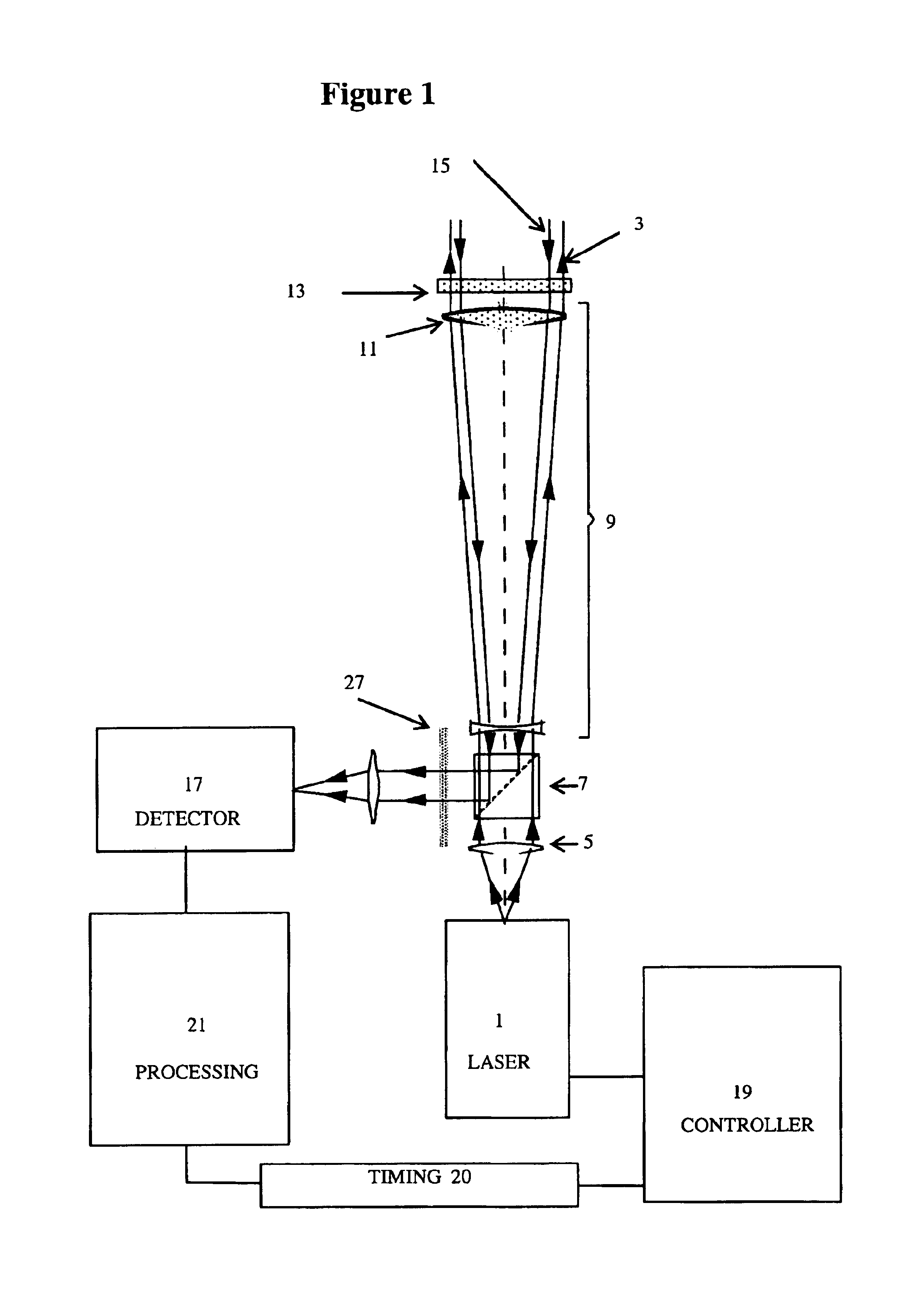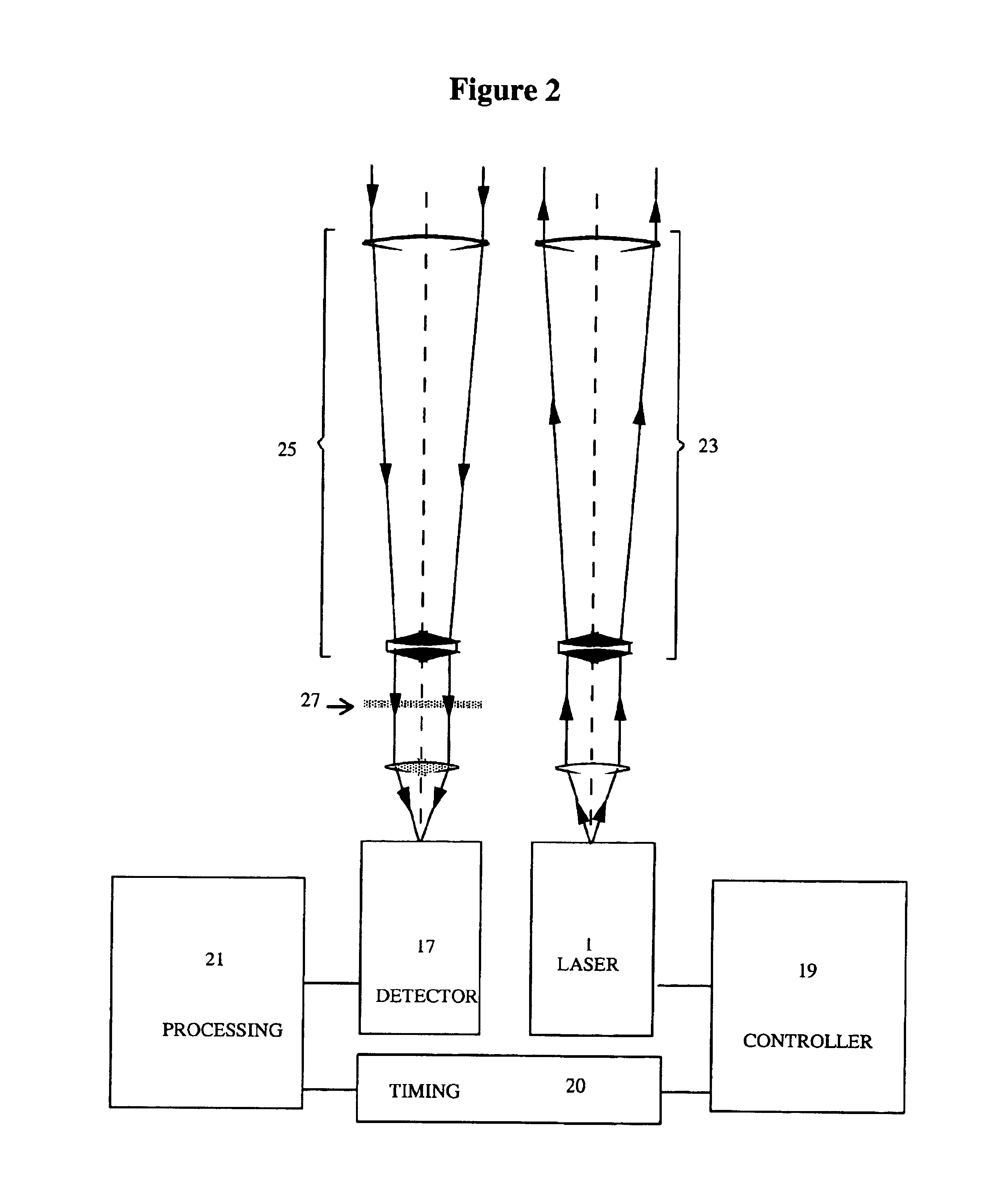Apparatus for and method of optical detection and analysis of an object
an object and optical detection technology, applied in the field of apparatus for optical detection and analysis, can solve the problems of interference pattern, inability to take into account the imperfection of the interface between, and the return combination of wavefronts is likely to be very complex, so as to achieve the effect of increasing the speed of detection
- Summary
- Abstract
- Description
- Claims
- Application Information
AI Technical Summary
Benefits of technology
Problems solved by technology
Method used
Image
Examples
Embodiment Construction
[0054]FIG. 1 shows an example of a “monostatic” configuration for the invention, i.e. a configuration in which there is a single optical system for both the probe beam output and the return beam collection. This monostatic configuration is the version of the invention tested and described in the later figures.
[0055]In FIG. 1, a semiconductor laser 1 emits 70 picosecond pulses at a repetition rate of 20 MHz and a power level of around 1 mW (The laser 1 used was a PicoQuant PDL 800 with a wavelength of 640 nanometres). The probe beam 3 produced by the laser 1 passes through a collimating lens 5 and then through a polarising beamsplitter 7. The polarised beam then passes through a telescope 9 and is collimated by the telescope's objective lens 11. Finally the beam passes through a quarter wave plate 13 before continuing onto the target (not shown).
[0056]The return signal 15 (which consists of reflected outward pulses) passes once again through the quarter wave plate 13. Thus the polari...
PUM
 Login to View More
Login to View More Abstract
Description
Claims
Application Information
 Login to View More
Login to View More - R&D
- Intellectual Property
- Life Sciences
- Materials
- Tech Scout
- Unparalleled Data Quality
- Higher Quality Content
- 60% Fewer Hallucinations
Browse by: Latest US Patents, China's latest patents, Technical Efficacy Thesaurus, Application Domain, Technology Topic, Popular Technical Reports.
© 2025 PatSnap. All rights reserved.Legal|Privacy policy|Modern Slavery Act Transparency Statement|Sitemap|About US| Contact US: help@patsnap.com



